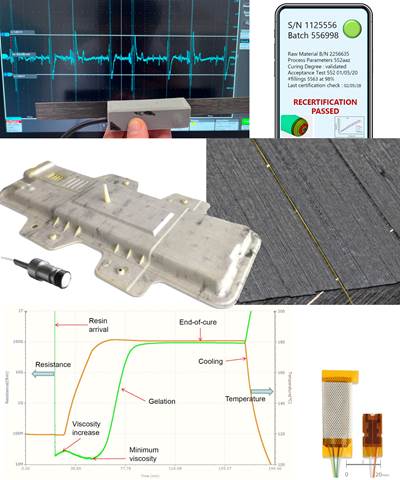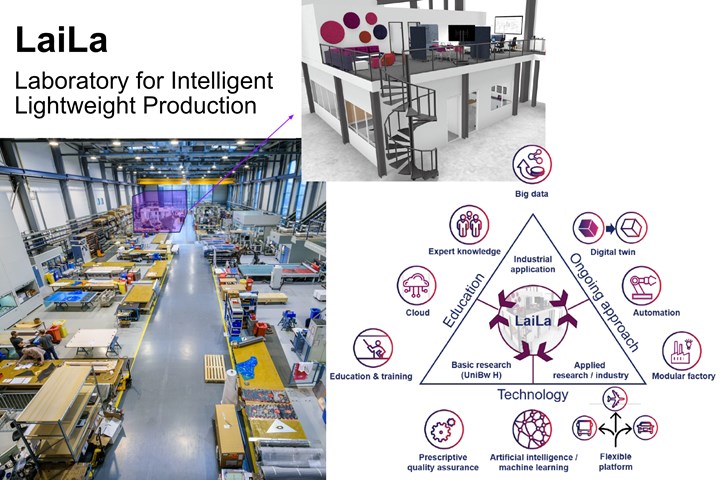
Photo Credit all images: CTC, LaiLa project
“The objective of LaiLa is to establish a laboratory that's a model factory for the development and testing of digital solutions to improve lightweight manufacturing,” says Constantin Hildebrandt, project coordinator for LaiLa at the Composite Technology Center (CTC, Stade, Germany), a subsidiary of Airbus Operations (Hamburg, Germany). The project is a collabration with Helmut-Schmidt-University / University of the Federal Armed Forces Hamburg (HSU-HH, Hamburg, Germany). HSU-HH focuses on research and on education of officers of the German Federal Armed Forces. “Laila will take on fundamental research but with a close collaboration with industry and making sure that results are indeed helping actual manufacturing,” says Alexander Fay, professor in the mechanical engineering department of HSU-HH. “It is a unique setup,” he adds, “because it’s focused on university research but it's located at the CTC, which provides an industrial playground.” The idea for LaiLa began in 2020, during the first lockdown of the COVID19 pandemic in Germany. “We wanted to foster collaboration between HSU-HH and German industry,” says Fay, “especially in the area of digitalization and lightweight manufacturing.”
Hildebrandt was a research associate working with Fay at the Chair of Automation Science at HSU-HH. He then worked as a systems and software architect in the wind turbine industry before joining Airbus at the CTC. “I'm working mainly in digitalization of production, which includes topics around how to get data out of PLCs [programmable logic controllers] and how to use that data to improve part quality, cycle time and/or cost, as well as new kinds of business models that are possible using these data.”
The bulk of the work completed in LaiLa — which began June 2021 and will end December 2024 — will be performed by a team of 11 PhD researchers supervised by Fay and two colleagues at HSU-HH but also by supervisors at CTC. “This setup ensures strong collaboration and splits the researchers’ time between the university and industry,” says Fay.
The LaiLa project is funded by dtec.bw – Digitalization and Technology Research Center of the Bundeswehr – and in direct collaboration with the Helmut Schmidt University Hamburg.
CTC and Composites 4.0
As Hildebrandt already mentioned, work to advance Composites 4.0 digitalization has been ongoing at CTC for years. See the section “Composites Industry 4.0” in my 2016 plant tour of CTC and the 2019 press release “CTC … deploys Plataine AI…”.
“Suppliers are asking why they should invest in digitalization,” says Marc Fette, CEO of CTC. “Or they claim they are already using sensors and manufacturing data, so there is nothing more needed. From our view, in many cases, the aerospace supply chain today is just now moving from Industry 2.0 to 3.0 [see images at right] and asking why they need to go further. We have examples showing what Industry 4.0 can achieve in terms of part quality and production improvements. That’s what we have been doing for several years now — installing sensors and collecting data. This is part of a bigger approach based on using big data where we are analyzing how to improve the quality, efficiency and robustness of the processes and connect that with the data. These are the approaches we are driving within our internal and external R&D activities, aiming toward concrete practical outcomes — [such as higher production rates and dustless assembly] — and we must validate this in real applications.”
“For five years now, we have built such a demonstration with the Plataine software and AI solutions for materials and asset tracking. This is an example of what we also can provide in LaiLa, together with HSU-HH, where we can take a solution and discuss how we can improve it continuously in a mutual approach with other companies. That's what LaiLa can provide and in the best case, we can bring some new solutions into real applications. On the other side, we can make the basic research that is needed together with our partners.”
LaiLa structure and work packages
Hildebrandt walks through the work packages within LaiLa, which helps to understand its structure.
- “WP 1 is about finding out what the requirements are for the various industrial applications we are researching. For example, we identify pain points in composites production from Airbus plants and then we look at what methods could be possible regarding digitalization, and we analyze those in order to find solutions for them in the upcoming work packages.”
- “WP 2 is about how to actually get data out of machines. For newer machines, this may not be as difficult, but there are manufacturing machines operating which were designed decades ago, and we have figured out how to get data out of these machines and how to model this data and use data analytics for use cases like predictive or preventive maintenance.”
- “WP 3 is where we work on methodologies for modeling the machines and production system to create an integrated model or digital twin of the manufacturing line, and then look at how to make use of it in combination with the manufacturing data.”
- “WP 4 is building on the former work packages, because when you think of AI and machine learning algorithms, they need very good, structured data and also lots of data, in order to work. We know how to collect that data via machines in the industrial context, but the main problem usually is that where we would like to apply AI, the necessary data is either not available or not well labeled.
This is why the previous work packages are as they are, providing an enabler for the fourth work package, which is then centered around AI applications for automated quality assurance (QA) but also AI-based support systems. An example is providing automated QA during 3D printing based on requirement profiles and integrated sensors.”
- “WP 5 is centered around loading up a model factory for validation, and we’ll discuss this more next.”
- “WP 6 is about education and knowledge transfer, which includes specialized training, which we will also discuss in more detail later.”
The Model Factory in the LaiLa project will be installed in the main production hall at CTC (see image at right). “The rendering shows an upper floor where researchers will work on coding, analyses and creating models,” explains Hildebrandt. “Below it is an electrical lab, which is mostly about devices, for example, PLCs and various sensors, and where researchers can test how to connect machines for data collection, analytics and integration with AI.”
“As shown in the diagram below,” he continues, “we start with the digitalization requirements and needs of Airbus, including the need to improve part quality, cycle time and cost as well as the potential for new business models based on the big data approach. So, we will take the Airbus requirements and build a Model Factory that is more open to external inputs to work on these requirements. So this Model Factory is a digital model of various production lines and is able to process in-situ data. The goal is to test potential solutions and understand the results. Initially, we will gain a better understanding of and refine digitalization requirements. Then the goal will be to develop new solutions based on technological advances and the latest research. And then we will work together with our academic and industrial partners to find solutions and test those in the model factory. Thus, we can analyze the potentials of digitalization technologies and mature them for industrial applications.
The LaiLa Model Factory — a digital model of various production lines — will start with Airbus digitalization requirements and collaborate with HSU-HH and other partners to refine these requirements, and develop and test new solutions. Photo Credit: CTC, LaiLa project
The diagram at left reviews the basic structure of LaiLa. Inside the triangle, LaiLa’s inherent mix of basic and applied research for actual industrial applications is shown. Outside, LaiLa is governed by the triumvirate of continuing CTC’s digitalization approach at right, development of new technology at bottom and transferring knowledge back into the supply chain at left.
Training and education
Education is one of the key elements within LaiLa, says Hildebrant. “During the work in this project, we will create training to augment transfer of the research results and knowledge into industry. So, these will be courses or workshops for dedicated topics, for example, how to connect machines in the factory and gather data from them, and how to create applications that make use of these data. Our aim is to develop training in topics where the industry needs support to build up experts.”
The first-floor electronics lab in the Model Factory area at CTC will be used for this type of training. “We can copy the machine setups from various production plants,” says Hildebrandt, “and train workers directly on their machine configurations. They can troubleshoot their digitalization process and we can offer really customized, user-oriented training for their machine integration.”
“We are already providing professional training courses in digitalization internally for Airbus plants in Germany,” says Fette. “For example, for PLC programming we provide a higher level of training for the maintenance guys compared to the basic level provided in the market. We have a kind of portfolio in the field of digitalization from these courses up to advanced robotic training. We would like to extend this training even more and one purpose of the LaiLa laboratory is to transfer digitalization knowledge to other companies and organizations across multiple industry sectors, not only for aerospace. The other goal is transfer from the university to industry, which will include publications and professional training to an external world based on the lessons we learn and the solutions we develop in LaiLa.”
Fette also wants to connect the academic world more closely to industrial applications. “We want LaiLa to help establish a platform where students can do practical research and have access to real-world data and an industrial setting where they can validate their scientific results.”
Preliminary floorplan of the LaiLa Model Factory at CTC shows stations such as thermoplastic skin pressing and ultrasonic welding. The already established 3D-HUB at bottom will be reconfigured as the new Digital Hub and Model Factory stations are installed. Photo Credit: CTC, LaiLa project
Example use cases
The figure above, says Hildebrandt, shows the planned layout of the LaiLa Model Factory at CTC, including its size (roughly 8 x 13.5 meters) and “the stations that we envision including. We are currently in the process of engineering the production processes that you see there, such as thermoplastic skin pressing.” (For more on this, see “Hydrostatic membrane consolidation: Skin-stringer panels in 60 minutes”.)
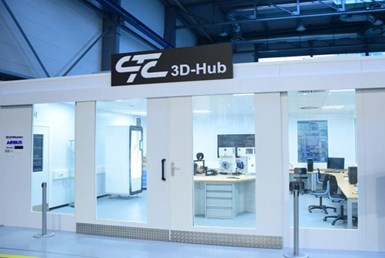
CTC 3D-Hub. Photo Credit: CTC
The Model Factory will actually take over the space currently occupied by CTC’s 3D-HUB — which will be reconfigured to sit next door — and, in addition to the electronics lab described earlier, will also include a path for post-processing of parts (green blocks in floorplan) including machining and assembly.
The image below gives more details for the “Visual inspection & assembly” station shown at the top right of the floorplan. This use case aims to improve the current approach by implementing “Smart Manual Drilling”. Hildebrandt explains that “a smart electric hand drill is a manual drilling device like you probably have at home but equipped to send its process information (e.g. rpm, torque, the drill bit being used, etc.) to an edge device that interprets the data along with positioning data in order to perform intelligent functions:
- Decide optimal RPM based on drill position and the material being drilled and send that speed setting to the smart drilling unit;
- Adapt drilling unit’s RPM setting based on torque measured in situ;
- Detect position of the drilling unit and enable/disable drilling depending on whether there is a planned hole to be drilled or not.
In this way, the smart drilling unit helps to optimize drilling parameters and achieve better drilling process control for improved quality and repeatability.
Details for "Smart Manual Drilling" to be implemented within the “Visual inspection & assembly” module of the LaiLa Model Factory. Photo Credit: CTC, LaiLa project
LaiLa future vision
Fette explains that due to its funding from the German government, LaiLa’s initial focus and concentration will be on the aerospace industry around Airbus, especially for lightweight production technologies and what improvements digital solutions can bring, including new technology approaches. “But we are open to give our knowledge also to other companies with always a mutual knowledge transfer. In other words, we can also get knowledge back and that's exactly what we are searching for — to better understand the needs of the industry, not only in Germany, and not only in aerospace. For example, if I look at our CTC staff focused on digitalization, none of them comes from an aircraft background and none are specialists in composites. If we are to advance in digitalization, we need specialists in this field from other industries and to bring them together in an interdisciplinary approach.”
“When we look at industries beyond aerospace, we see many of the same struggles with digitalization,” says Fette. “So LaiLa is part of this development. The goal is not only to achieve digitalization, but also to validate what we can achieve and possible new business models to exploit the value of what we can achieve. A platform like LaiLa could be helpful not only for knowledge transfer to industry but also to make good analyses and define the best strategy for future investments. This is not only necessary for big OEMs like Airbus but is especially critical for smaller SMEs and startups.”
“I also see it on a broader scale,” says Fay at HSU-HH. “In the long term, I see LaiLa as a kind of spark that starts this development and training platform which will be open to other companies. And not only to German companies but worldwide. The idea of the LaiLa project is to foster research, so that Germany is competitive on an international scale. We are not trying to conceal that, but we also don’t want to restrict ourselves to a purely German perspective. So, indeed we are looking forward to further cooperation beyond this initial project.”
“I think the unique structure of LaiLa really opens the door for a new way of cooperation between education, academia and leading research in industry,” says Fay. “It’s a way to have crystallization points where basic research can be carried out with very short and close links to education for the industry. And this enables us as a university to fulfill the role of bringing knowledge to the public — not just via the traditional path of having students which are enrolled at the university, but also via companies like CTC, so that we can be quicker and more direct to the industry. My vision is that the subject of a PhD research today can be a subject of an industrial training course within 18 months, and that knowledge transfer would be much quicker than we have it today.”
Related Content
Price, performance, protection: EV battery enclosures, Part 1
Composite technologies are growing in use as suppliers continue efforts to meet more demanding requirements for EV battery enclosures.
Read MoreA new era for ceramic matrix composites
CMC is expanding, with new fiber production in Europe, faster processes and higher temperature materials enabling applications for industry, hypersonics and New Space.
Read MoreOne-piece, one-shot, 17-meter wing spar for high-rate aircraft manufacture
GKN Aerospace has spent the last five years developing materials strategies and resin transfer molding (RTM) for an aircraft trailing edge wing spar for the Airbus Wing of Tomorrow program.
Read MorePlant tour: Albany Engineered Composites, Rochester, N.H., U.S.
Efficient, high-quality, well-controlled composites manufacturing at volume is the mantra for this 3D weaving specialist.
Read MoreRead Next
Discover More About Sensors for Composites Processing
Throughout 2020 and 2021, CW has reported on sensors that can be used to process composites, as well as projects that demonstrate their installation and capabilities. This microsite collates CW’s reporting on sensors to provide, in one place, information about the types of sensors being used in composites.
Read MoreSensors for Composites Processing: CW Trending Episode 8
Why use sensors in composites manufacturing? What sensor types are available and how can they be applied? Learn about all of this and more in a discussion with CW senior editor Ginger Gardiner and editor-in-chief Jeff Sloan in this episode of CW Trending, sponsored by RVmagnetics.
Read MoreFrom the CW Archives: The tale of the thermoplastic cryotank
In 2006, guest columnist Bob Hartunian related the story of his efforts two decades prior, while at McDonnell Douglas, to develop a thermoplastic composite crytank for hydrogen storage. He learned a lot of lessons.
Read More








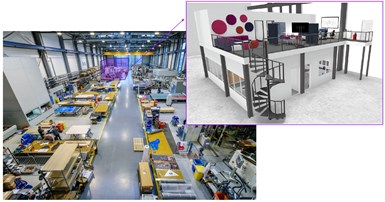

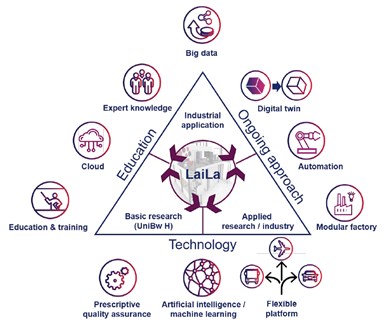

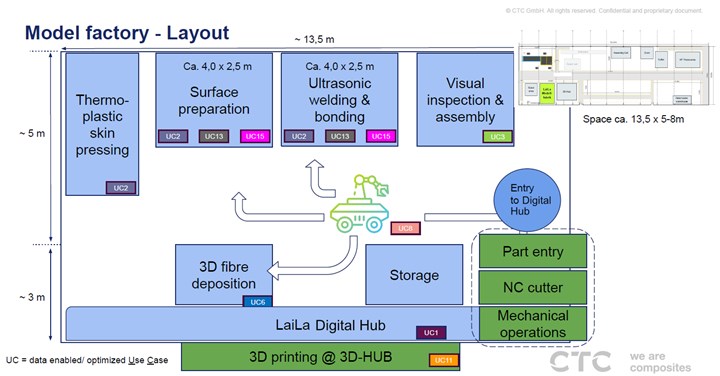














.jpg;maxWidth=300;quality=90)





